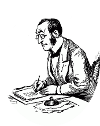"A Good Many Different Kinds of Ball"
In 1867 story, a father recollects boyhood ballplaying
Property "Version" (as page type) with input value "{{{Version}}}" contains invalid characters or is incomplete and therefore can cause unexpected results during a query or annotation process.
- From the January 2013 NDPost)
In a charming 1867 volume, a father delivered an extended disquisition about ball games in his youth in New England. That was definitely before 1840 and more likely in the 1820s, or the 1830s at the latest. (The book had an 1860 copyright registration, so the author penned it in that year or in the 1850s). The detail of this recounting merits full excerpting:
“I think the boys used to play ball more when I was young than they do now. It was a great game at that time, not only among the boys, but with grown-up people. I know that playing ball is getting into fashion again, but I don’t think it is as common even yet as it used to be. We had, I remember, a good many different kinds of ball. There was “barn-ball,” when there were only two boys to play, one to throw the ball against the barn and make it bound back, and the other to strike at it with his club. Then there was “two-hold-cat,” when there were four boys, two to be in and knock, and two to throw. Then there was “base-ball,” when there were a good many to play. In base-ball we chose sides, and we might have as many as we pleased on each side -- five or fifty, or any other number.
“Then there was “wicket-ball,” as we called it in the part of the country where I lived. In this game, two sticks, some five or six feet long, were laid on some little blocks near the ground, and the ball, which was a large one, was rolled on the ground, and the one that rolled it tried to knock off this stick, while the one that was in and had the bat or club, was to strike the ball and not let it knock the stick off. If the stick was struck off, then the one knocker was “out.” Or if he hit the ball and raised it in the air, and any one on the other side caught it, he was “out.” I find that ball-playing changes some, and is different in different parts of the country, but it was a very wide-awake sport, and there was no game in which I took more delight. On ‘Lection-day, as it was called, of which I have spoken before, all the boys and young men, and even men who were older, thought they must play ball. On town-meeting days and training days, this game was almost always going on.”
Source: Winnie and Walter’s Talks with Their Father about Old Times Boston: J.E. Tilton and Company, 1867[1860]), pp. 54-56.
Tom’s Comments:
Allowing for the somewhat “in-my-day” tone, there are a few interesting items in this passage. Note the unusual spelling of two old cat or two o’cat. Was there some action of holding the ball, holding the bat, holding the runner that inspired the use of the word “hold?” The initial claim that ball play was more popular in his youth is at first a head-scratcher given the surge of popularity of baseball in the1850s and 1860s.
But what if he reckoning was accurate, if only for his part of New England? That would be interesting evidence for baseball historians trying to measure the trajectory of the game’s development. Did what he called “base-ball” more resemble town-ball, or did the word “base-ball” have a wider currency that we have suspected? The description of wicket-ball seems slightly askew from other accounts--regional variation or memory lapse? Last, the civic holidays that ball play accompanied were not always in clement seasons. Training days tended to be during milder or hot weather, but town meeting and election days often occurred in March and November. The author’s points about the importance of ball play may be stronger than at first glance, if the players did not let the prospect of foul weather discourage their zeal.
Comments
<comments voting="Plus" />
